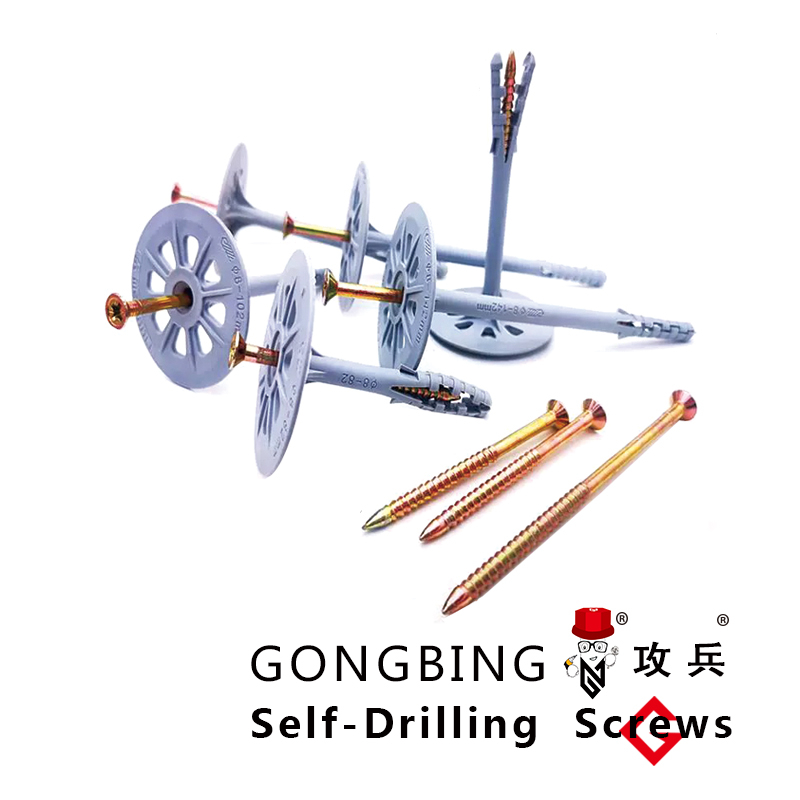flat head self drilling screws
Understanding Flat Head Self-Drilling Screws Features, Benefits, and Applications
Flat head self-drilling screws are a vital component in various construction and manufacturing applications. Renowned for their efficiency and reliability, these screws are designed with a unique head shape that allows them to sit flush against the surface of the material into which they are driven. This article will delve into the features, benefits, and applications of flat head self-drilling screws, highlighting why they are a preferred choice among professionals.
Features
The flat head design of these screws enables a sleek finish, reducing the risk of snagging and enhancing the aesthetics of the assembled product. Made from durable materials such as stainless steel, carbon steel, or other alloys, flat head self-drilling screws are engineered to withstand stress and corrosion, making them suitable for both indoor and outdoor applications. The self-drilling capability, characterized by a sharp, tapered point, allows these screws to penetrate metal, wood, or plastic without the need for pre-drilling a pilot hole. This feature significantly accelerates the installation process, saving time and effort.
Additionally, flat head self-drilling screws often come with various drive types, including Phillips, square, and Torx, providing versatility for different tools and preferences. The screw threads are designed for optimal holding power, ensuring a secure fit that reduces the likelihood of loosening over time.
Benefits
One of the primary advantages of using flat head self-drilling screws is their ability to streamline the assembly process. The need for pre-drilling is eliminated, which minimizes labor costs and increases productivity. Additionally, these screws provide a strong, reliable connection that is resistant to vibration and shear forces, making them ideal for applications that undergo frequent movement or stress.
Another benefit is the aesthetic appeal of the flat head design. When installed, the screw's head sits flush against the surface, creating a clean and professional look. This is particularly important in applications where the visual aspect is crucial, such as furniture design and decorative installations.
flat head self drilling screws

Moreover, flat head self-drilling screws are available in a variety of sizes and finishes, allowing for customization based on project requirements. This flexibility makes them suitable for an array of applications, from residential construction to industrial projects.
Applications
Flat head self-drilling screws find use in a multitude of applications across various industries. In construction, they are commonly used to secure metal roofing, siding, and insulation materials. Their ability to drill through tough substrates makes them a favorite for metal fastening, especially in structures that require long-lasting durability.
In the manufacturing sector, these screws are applied in the assembly of machinery, appliances, and automotive components. Their robust design ensures that products can withstand rigorous use and environmental factors, enhancing product longevity.
Additionally, flat head self-drilling screws are utilized in woodworking projects, providing a strong and seamless connection in furniture making and cabinetry. The ease of installation and clean finish makes them particularly appealing for carpenters and DIY enthusiasts.
Conclusion
Flat head self-drilling screws are an indispensable tool in the toolkit of builders, manufacturers, and DIYers alike. Their unique design, coupled with the ability to penetrate materials without pre-drilling, makes them a practical and efficient choice for a wide range of applications. With benefits that include speed, strength, and aesthetic appeal, it is no wonder that flat head self-drilling screws continue to be a vital component in construction and manufacturing endeavors worldwide. Whether you are building a house, assembling furniture, or working on an industrial project, understanding and utilizing these screws can significantly enhance your work's efficiency and quality.
-
Weatherproof Plastic Expansion Anchors for OutdoorNewsJun.06,2025
-
Sustainability in the Supply Chain: Eco-Friendly TEK Screws ProductionNewsJun.06,2025
-
Load-Bearing Capacity of External Insulation FixingsNewsJun.06,2025
-
Double Head Bolts: Enhancing Efficiency in Industrial MachineryNewsJun.06,2025
-
Corrosion Resistance in Chipboard Screws: Coatings for Wholesale DurabilityNewsJun.06,2025
-
Butterfly Toggle Bolts : Enhancing Structural ResilienceNewsJun.06,2025
